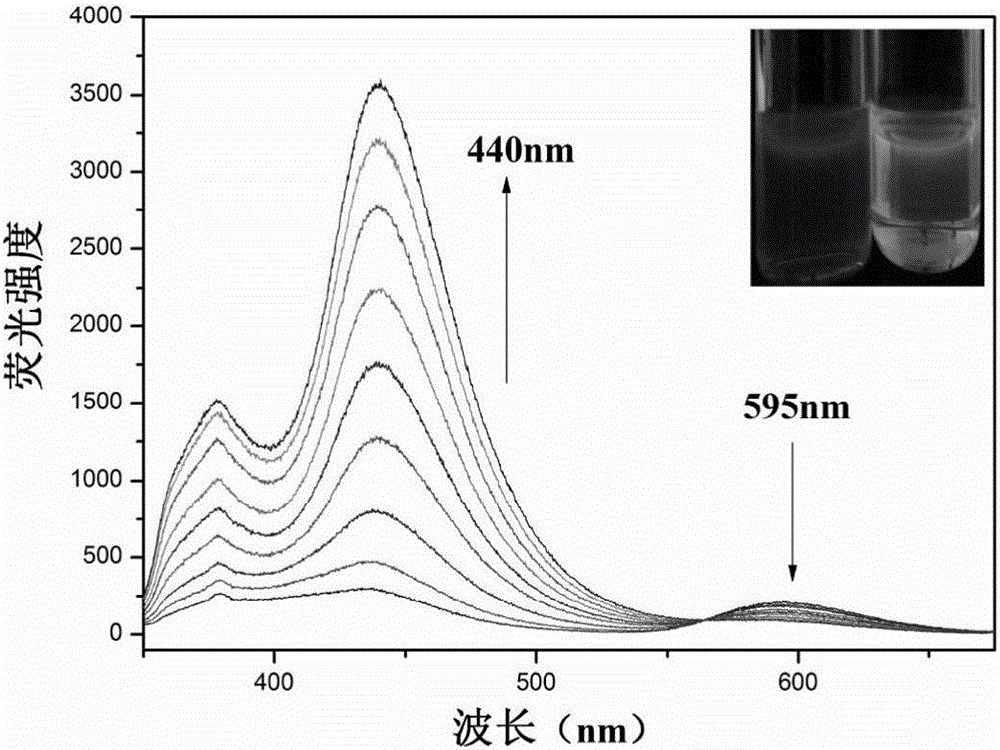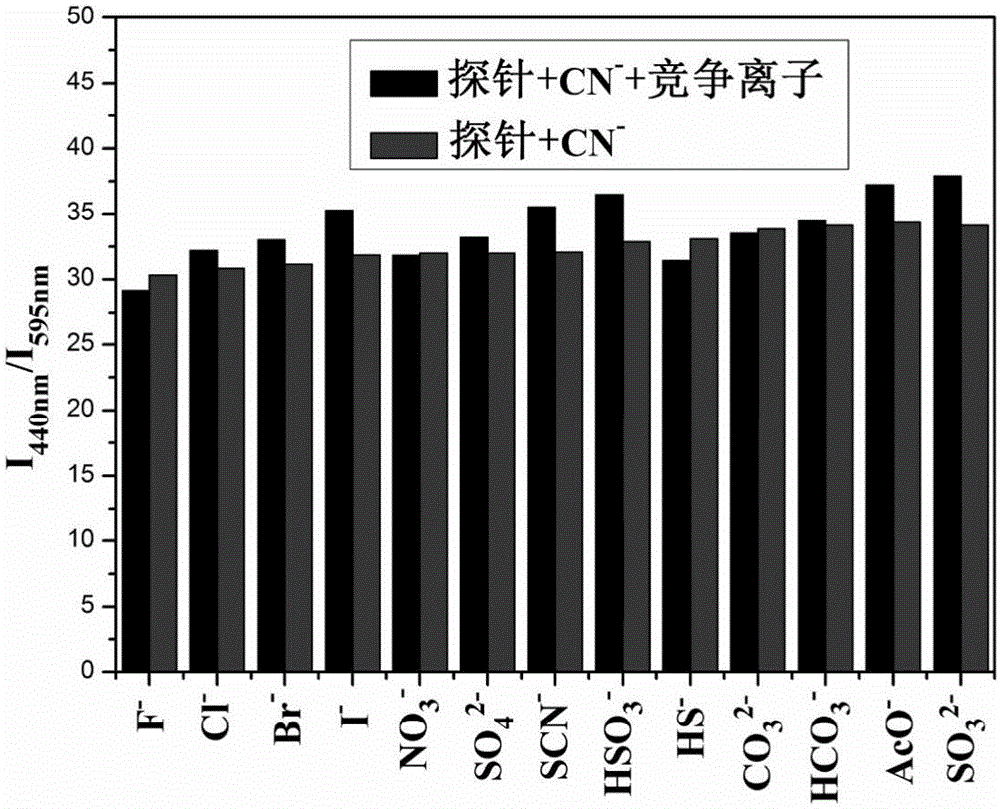Ratio type fluorescence probe for determining CN<-> as well as preparation method and application thereof
A fluorescent probe and ratio-based technology, applied in the field of fluorescent probes, can solve the problems of expensive raw materials and complicated preparation, and achieve the effects of simple reaction conditions, simple detection methods, and good cell membrane penetration.
- Summary
- Abstract
- Description
- Claims
- Application Information
AI Technical Summary
Problems solved by technology
Method used
Image
Examples
Embodiment 1
[0024] Example 1 Determination of CN - Preparation of ratiometric fluorescent probe Probe1
[0025] Dissolve 0.223g (1mmol) of N-ethylcarbazole-3-carbaldehyde and 0.365g (1mmol) of 1,1,2-trimethyl-3-ethylbenzindole iodide in 10mL of ethanol and heat to reflux React for 4 hours, cool, filter, and wash with ethanol to obtain 0.34 g of a purple-brown solid with a yield of 59.6%.
[0026] Probe Probe1 for 1 HNMR characterization, the results are as follows:
[0027] 1 HNMR (300MHz, CDCl 3 ): δ8.20(d, J=8.4Hz, 3H), 8.03(d, J=7.5Hz, 1H), 7.91(d, J=15.3Hz, 2H), 7.73(t, J=14.7Hz, 1H ),7.64(t,J=14.7Hz,1H),7.56(q,J=25.5Hz,1H),7.39(m,J=27.3Hz,3H),7.27(s,2H),5.12(d,J =6.0Hz, 2H), 4.29(d, J=7.2Hz, 2H), 2.09(s, 2H), 1.65(s, 3H), 1.37(t, J=14.1Hz, 3H)
[0028] 13 CNMR (75MHz, CDCl 3 ):δ156.66,149.67,144.63,141.10,141.29,138.42,134.01,132.20,131.18,129.18,128.11,126.10,125.02,123.84,121.73,112.36,110.59,109.93,108.62,54.09,44.51,38.79,28.03,19.16, 15.16
Embodiment 2
[0029] CN of embodiment 2 fluorescent probe Probe1 - Titration fluorescence plot
[0030] Add 20μL fluorescent probe Probe1 stock solution to 2mLDMSO system for CN - Fluorescence titration experiment is detected on a fluorescence spectrophotometer. With the addition of the sample to be tested, the fluorescence intensity at 440nm increases gradually, and the fluorescence intensity at 595nm increases gradually. Instrument parameters: the slit widths of the excitation wavelength and emission wavelength are 2.5nm and 5.0nm respectively, and the maximum excitation wavelength of the fluorescent probe solution is: λ ex 340nm and the maximum fluorescence emission wavelength is: λ em 595nm.
Embodiment 3
[0031] CN of embodiment 3 fluorescent probe Probe1 - Titration UV diagram
[0032] Add 20μL fluorescent probe Probe1 stock solution to 2mLDMSO system for CN - The ultraviolet titration experiment is detected on the ultraviolet spectrophotometer. With the addition of the sample to be tested, the ultraviolet absorption intensity at 503nm is gradually weakened, and the ultraviolet absorption peak intensity at 258nm and 285nm is gradually enhanced.
PUM
 Login to View More
Login to View More Abstract
Description
Claims
Application Information
 Login to View More
Login to View More - Generate Ideas
- Intellectual Property
- Life Sciences
- Materials
- Tech Scout
- Unparalleled Data Quality
- Higher Quality Content
- 60% Fewer Hallucinations
Browse by: Latest US Patents, China's latest patents, Technical Efficacy Thesaurus, Application Domain, Technology Topic, Popular Technical Reports.
© 2025 PatSnap. All rights reserved.Legal|Privacy policy|Modern Slavery Act Transparency Statement|Sitemap|About US| Contact US: help@patsnap.com



